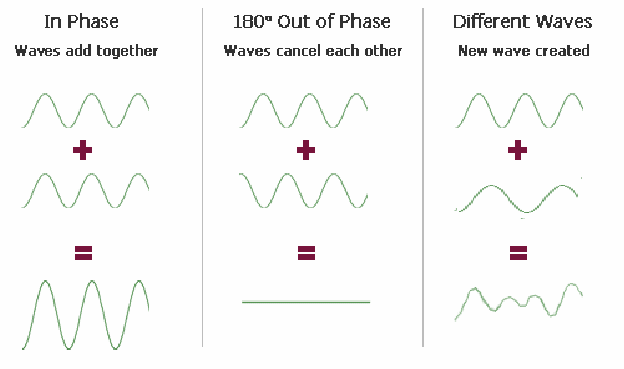When two waves of the same type meet, they interfere and we can work out the resulting wave using the principle of superposition. This states that the resulting displacement at any time is the vector sum of the two displacements of each individual wave.
If the waves are in phase everywhere, (coherent) they have the same wavelength (below left) then we have constructive interference. The resulting wave is larger than either wave.
If the waves are out of phase everywhere (below centre) then they have the same wavelength and we have destructive interference. The resulting wave has zero displacement everywhere.
If the waves have different wavelengths then at some points they will be out of phase, so the displacements cancel and at others they will be in phase so the displacements add. Mostly though there will be a vector sum which is incomplete destructive or constructive interference.
